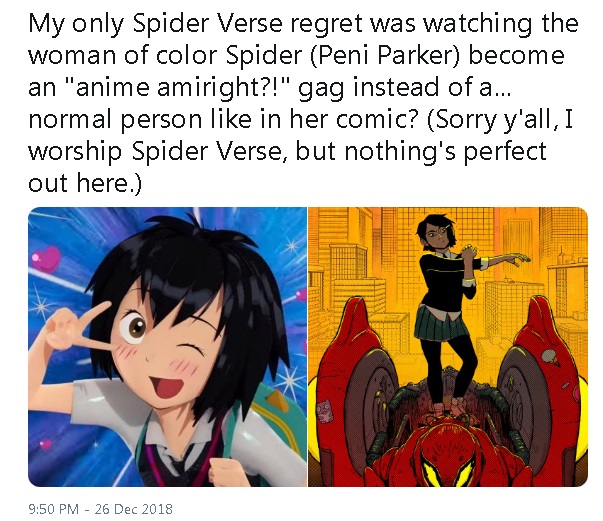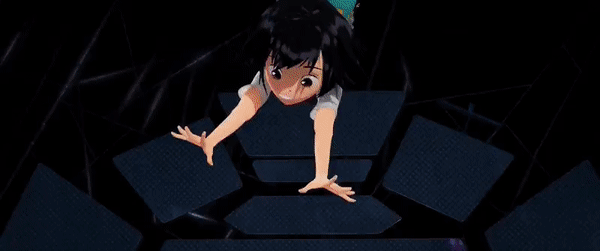This year I’ve finished roughly 120 series so far, slightly less than last year. Still a massive amount of anime, but if you watch it week by week you don’t notice it all that much. It only takes another twenty to twentyfive minutes to watch another episode after all. And it’s not as if I pay an equal amount of attention to each series. Some, usually the best, you have to pay close attention to because every moment in an episode matters. With others … not so much.
2018 is my third full year of watching seasonal anime and I’ve now gotten comfortable enough with Japanese to be able to keep an ear on whether something interesting is happening so I can do stuff while watching anime. Some people hate this way of watching, argueing that if you can watch a series while doing anything else it’s a bad series and you shouldn’t watch it. But for me that’s always been how I’ve watched or read or listened to anything; I always like to do something else as well, unless I’m really, really engrossed. Watching anime subbed I couldn’t do that at first, needing to keep reading the subtitles to understand what’s going on, but my grasp of spoken Japanese is now decent enough that I can follow along until something happens.
Was 2018 a good year for seasonal anime? I’m not actually sure but I’m also not sure I actually care all that much. For me personally it started off with a bang: winter 2018 had some of the best series of the year: Yorimoi of course, but also Yuru Camp, Devilman Crybaby, Pop Team Epic, the new Card Captor Sakura, Violet Evergarden and Koi wa Ameagari no You ni, a line up that can hold up to any other season of anime. What’s missing though and what never quite emerged this year is the one anime everybody talked about, everybody had seen, like Yuri on Ice two years ago.
Instead there were several what you might call cult favourites emerging throughout the year, like fall’s Zombieland Saga or summer’s Banana Fish, that part of fandom got really, really hyped about but which never quite became the one series everybody talked about. Not even season three of Sword Art Online managed that: the people who still liked SAO watched it, the people who hated or got fed up with SAO a long time ago …didn’t. Nobody really felt the need to hatewatch it; even Digibro gave up in the end.
It’s not that there weren’t good or interesting series this year, as a look at my blog archives should show. It’s that there wasn’t any one series that appealed to all or most anime fans in the way HeroAca e.g. did when it first came out. Too much anime is being made and worse, it’s increasingly spread out over too many streaming sites. If you want to keep up with everything, you need to watch Crunchyroll and Netflix and Hi-Dive and Amazon and Funimation/Hulu in the US, maybe Viewster in Europe, whatever local anime sites there are in your country and it gets too much, unless, like me, you both have the money and time (especially!) to keep up and all those platforms are offered in your country…
Another reason: 2018 was another bitch of a year, full of constant churn and misery and even if you’re not directly affected, keeping up with everything is a chore. Among all this chaos there was little room for in depth and lasting conversations about anime, instead you got those brief periods of intense focus on the latest series to pick the interest of enough people. On Twitter especially you’d see those discussions flare up and die down for series like Devilman Crybaby, Pop Team Epic or Aggressive Retsuko, absolutely dominating the timeline for a few weeks (more rarely, a full season), then abandoned for the next shiny thing to come along. All of which intensified by the increasing importance Netflix and its habit to just dump an entire series all at once, so you’d get about a week of that discussion as everybody went and watched it at the same times. (Also a process I’ve seen with the She-Ra Netflix report, where the same thing happened.)
No wonder I’ve been watching so many kids shows this year. With a Precure or Aikatsu Friends there will likely never be more than a cult audience discussing it, but because they’r usually such long running shows, the conversation about them remains active for a much longer time when even Darling in the FranXX the most controversial series this year is already forgotten as Goblin Slayer came along.
So than, if there never really was that one outstanding series, the really important one everybody kept talking about even after it finished airing, does that mean 2018 was a mediocre year for anime? Perhaps. Or it could be that anime is just too big now that it is no longer that easy to be the new Attack on Titan (and notice that its latest season didn’t get much buzz either). In any case, the same thing is happening in other media: there’s more of everything, everything is more splintered and everything changes faster. In an age of binge watching the old seasonal model of anime watching we’ve just gotten used to might already be becoming obsolete…
This is the twelfth and last post in this year’s twelve days of anime challenge. Originally it was supposed to come out on Christmas day, but real life drama intervened.



